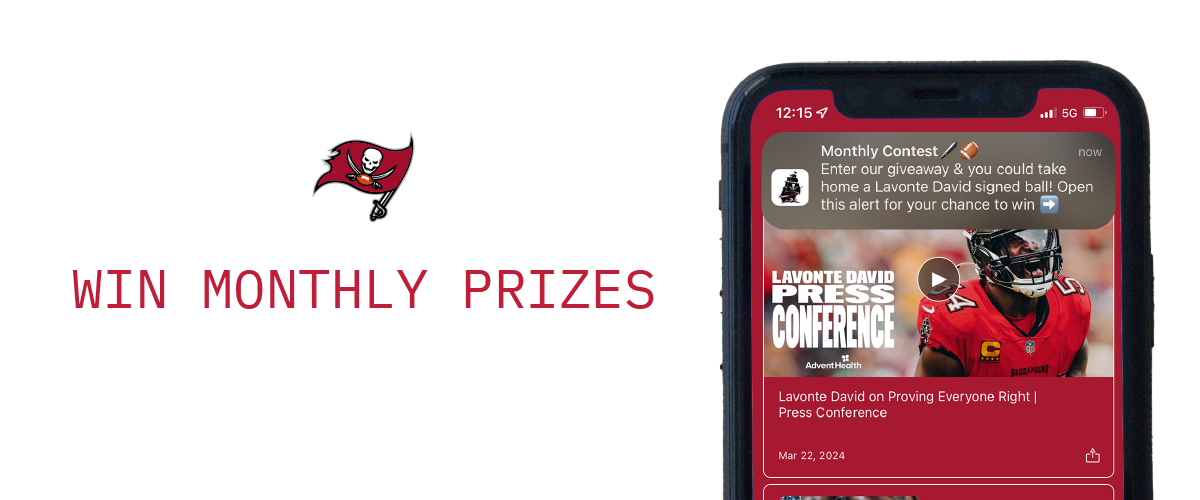Answers.
As the thought-provoking word resonates, Tampa Bay Buccaneers' offensive consultant Tom Moore slowly rises from the wooden desk in his office. He strolls down the hallway lined with nostalgic illustrations of the team's past, returning with four sheets of white paper. The door closes, silencing the noise of distant chatter for a glimpse at history. He holds the papers delicately and places them on the desk, illuminating their worth. On them, are four hand-drawn plays scribbled in pencil. Leaning over my shoulder, Moore recollects. The voice that has echoed across the NFL landscape for 45 years from the sideline, now takes center stage.
"We line up in this formation and if they give us this coverage, which is very popular in the NFL, and close it down with 'Jaguar' - a pass pattern - then that is a touchdown," Moore explained. "Next is a 'Dungy' play. We call it Dungy because it is what we did in Indianapolis. In the 13 years in Indianapolis, we saw that one time and threw a touchdown to beat Cincinnati and never saw it again because that is our answer. Next, people wanted to bring down the strong safety and then roll up Cover Two; well with the SAM strong safety, they have an extra guy. You break that tight end out there and that guy is waiting for him – a hot, blitz control. Well, we had a sixth option. We ran a screen and that was our answer to that.
"I liken it to college. Have you ever been to an exam, and you can hardly wait to get there because you know the teacher cannot ask you a question you cannot answer? That's fun and you sleep well the night before too. But, by the same token, we have gone into an exam and said, 'Wooh man, I hope they don't ask me this question.' Then, you do not sleep well, and you are nervous. You try to get your players to the point where on Sunday they cannot do a single thing that we do not have an answer for."
After finishing his detailed breakdown, Moore sits back down in his chair and swivels to the filing cabinet lining the back wall. The drawer opens, providing a reminiscent gateway to famed NFL annals. He pulls out a sheet of paper and gently guides it to the desk. Printed on the single page are legendary formations: Four game-sealing plays in red and black ink that spearheaded victories in Super Bowls XIII, XIV, XLI and LV, respectively. Each will forever be etched in Moore's subconscious, drawing a devilish grin. Moore's eyes dance as the evocations return. He conjures up one singular play in his mind, reliving the glorious bygone.
January 20, 1980.
60 Prevent Slot Hook & Go was the call in the huddle.
On a third-and-eight from the Pittsburgh 27, John Stallworth ran a hook-and-go pattern. The goal of the route was to go down, fake the hook – hoping the defensive back would bite on it – and then to run deep. Stallworth ran right past the inside defender (who mistakenly took the outside receiver), leaving only the outside defender, Rod Perry, to make the play downfield. Terry Bradshaw threw the football. When Stallworth looked back, instead of the ball coming for the inside shoulder, the trajectory of the ball was soaring for Stallworth's right, outside shoulder. However, as fate would deliver a blessing, that placement allowed the catch to be made. Perry leaped and was about an inch away from deflecting the pass, but Stallworth adjusted and caught it without breaking stride, running untouched into the end zone.

Stallworth's 73-yard touchdown reception off Bradshaw's rocket propelled the Steelers to a fourth-quarter lead and eventual 31-19 victory over the Rams – providing the Steelers with their fourth Super Bowl title in six years. The Pittsburgh staff had put in the wrinkle a week before the Super Bowl specifically engineered for a prevent defense, and the opportune moment came. All season long in 1979, Pittsburgh had run solely a hook and slide off that concept and the reimagined play worked like a charm. When the game of football was transitioning to an aerial circus, Moore and company maximized the talent of Bradshaw and his weapons, allowing them to fly in the late 70s.
"That play right there, it won us the Super Bowl," Moore twinkled. "Terry Bradshaw got to it, and it was John Stallworth who caught it. I credit Lynn Swann for teaching me one of my biggest lessons going into pro football. Lynn came to me and said, 'Stallworth and I can catch the ball. We can play a long time and make a lot of money in this profession, so teach us what we don't know.' I responded, 'What don't you know?' He said, 'We need a lot of help on adjusting routes and a lot of work on reading coverages and a lot of work on beating coverages. Teach us that.' So, that's what I did.
"What you have to do is teach them what to do: meetings, preparation, film, practice, all that stuff. Then you have to teach them how to do it. If you tell a receiver, 'Run a hook route,' well then, it's, 'How would you like me to run that?' Because, if you get man coverage or inside/outside technique, you can get man-press technique, you can get zone and you can get man-rotation or zone-rotation, so 'How do you want me to run it?' If you can teach them how and what to do, then that allows them to play fast. You have to play fast. If you can play faster than the opponent, then eventually you will break his will. Then the defensive back says, 'I can't cover' or, 'We'd better play Cover Two.' You don't want the receiver saying, 'I can't get open,' because then he broke your will. You want to get them into a position where they can break the other guy's will. The only way they can do that is through the proper teaching, fundamentals, and technique."
Moore reclines as thoughts pervade like a hologram projector. It's June at the AdventHealth Training Center and he is approaching a career-defining milestone. The spry 84-year-old is days away from recognition in Canton, Ohio, where he will receive the Hall of Fame Award of Excellence – a program launched by the Pro Football Hall of Fame last year to celebrate significant contributors to the game. Moore will be immortalized for his long-established imprint on the game of football as an assistant coach. He is one of the greatest offensive minds in NFL history, patrolling the sidelines for 45 years. From a corner playground to stadiums basked in the prime-time spotlight, Moore has cemented his legacy as an offensive architect. His illustrious coaching tenure began in 1961 when he started working for his alma mater, the University of Iowa, and it sparked a love affair that has lasted a lifetime.
Moore began playing organized football in the fifth grade in Mt. Pleasant, Iowa, which ignited his relentless desire to compete. With a father who was frequently away from the home and a working mother, the coaching staff served as Moore's moral compass, instilling a commitment to education and dedication to hard work. After graduating from Rochester High School, Moore attended the University of Iowa, where he played quarterback. He was part of a team that won a Big-10 title in 1958 – before color TV had been introduced into affluent living rooms across America – and another in 1960. Moore's experience as a signal-caller provided a unique lens into grasping the intricacies of defenses and how to exploit weaknesses. That philosophical approach has catapulted him forward. During 1961-62, Moore stayed as a graduate assistant for the Hawkeyes, before serving two years in the Army. The Minnesota native resumed his coaching career at the University of Dayton, where he coached running backs. Moore went on to coach at Wake Forest, Georgia Tech, the University of Minnesota and for the New York Stars of the World Football League (WFL).
"I think I got $100 a month," Moore said on his grad work at Iowa. "Then, I went into the Army because I did ROTC and got my commission. I spent a year in Korea and a year in Georgia. Next, I got my first job at the University of Dayton, making $6,000 a year. That was my salary for the first four years. I got to go to Wake Forest and I made $12,000. Then, I went to Georgia Tech, and I made $15,000 and then Minnesota, I made $18,000. Then, I left for a year and went to the World Football League. It went belly up and I lost every dime I had.
"I had a wife, two kids to support and I was living in New York with no job. I had not been paid for six months. I was broke and I told myself I would wait until March 1st, then I was going to do something else with my life. I went from no job to suddenly having three offers. I made it a day before I decided to quit. Looking back, I have absolutely no regrets. You have to have your priorities of what is important. I have never negotiated a contract. I have never had an agent. I always thought, 'If I cannot get it on my own, then I do not deserve it.'"
That principle serves as Moore's guiding paradigm. His refusal to succumb to bitterness paid dividends. Undeterred, driven by a dream, Moore pushed forward. In 1977, Moore got his big break: The National Football League came calling. Moore joined Chuck Noll's coaching staff in the Iron City, where he initially served as the receivers coach, a position he held for six seasons. That year, nearly 300 players were taken in the NFL Draft, but none by the name of Tony Dungy. As Dungy's coach at Minnesota and an offensive specialist, Moore influenced the storied Steelers to offer Dungy a free agent contract. Upon arrival, Dungy transitioned from quarterback to defensive back. That move fashioned an unbreakable bond between Dungy and Moore, one that would eventually shape an upper echelon team in the NFL.

"I flew into Minneapolis, and we gave Tony Dungy a $2,000 signing bonus and a three-year contract for a little over $14,000," Moore described. "Back then, those guys had to have separate jobs during the season. In that time, we had one, three-day minicamp and that was over memorial weekend so guys could get off work that weekend. Now, it is OTAs and minicamp and Phase One, Phase Two and all that stuff. I am for the players to make as much as they can. I am for the owners to make as much as they can. When I first started at Pittsburgh, we had six assistant coaches and a head coach. That was it. Now, it has grown exponentially."
With Pittsburgh, Moore was part of the Super Bowl XIII and XIV coaching staffs, mentoring players including Hall of Famers Lynn Swann, John Stallworth and Terry Bradshaw. He served as the Steelers' wide receiver coach until 1983 when he was promoted to the club's offensive coordinator role (1983-89). Within a decade, Moore had helped Noll transform a franchise that had been the laughingstock and object of mockery on The Tonight Show into the mecca of the football world. The Steelers came to embody American labor during the 1970s, representing a gritty, blue-collar mentality that still persists.
"I say I am the most fortunate person in the world because I got my start with Pittsburgh and Chuck Noll was so good with the coaches and he brought in college coaches and he trained them how to teach and what he wanted taught," Moore said. "So, I was fortunate there. That is what Chuck was, he was a great teacher. On the first day of practice for the 13 years I was in Pittsburgh, we spent an hour teaching everybody on the team how to block and tackle by the numbers. He was very influential."

Following 13 seasons in Pittsburgh, Moore spent time with eight teams serving in various offensive roles. Moore served as a receivers coach in Minnesota during the 1992-1993 seasons under Jerry Burns and Dennis Green before he headed to Detroit. He spent three seasons as the Lions' offensive coordinator, leading a unit boasting Hall of Fame running back Barry Sanders and star pass-catcher Herman Moore. The team led the NFL in total offense in 1995 under Moore's tutelage, becoming the first team in league history to have two receivers eclipse 100 catches in a single season (Herman Moore and Brett Perriman).
After his stint in Detroit, Moore spent a season with the New Orleans Saints as the running backs coach, then landed with the Indianapolis Colts. He spent a decade on Dungy's coaching staff, running an offense led by Hall of Famers Peyton Manning, Edgerrin James, Marvin Harrison and household name Reggie Wayne. Moore led the Colts to a Super Bowl XLI win over the Chicago Bears. He oversaw the development of Manning, molding him into one of the greatest quarterbacks in NFL history. Manning won four MVPs with Moore in his ear, as the wizard drove him to reach unimagined heights. Moore and Manning were a brilliant tandem from 1998 - when the Colts selected Manning with the No. 1 overall pick - until 2010. They took the NFL by storm during that stretch, engineering the league's unquestioned offensive onslaught: No. 1 in points (26.1 per game), passing yards (261.9) and passing touchdowns (407). The trio of Manning, James and Harrison helped the Colts achieve five division titles from 1990-05, establishing Indianapolis atop the hierarchy in the league. Only two teams in NFL history have produced a 4,000-yard passer, a 1,500-yard rusher and a 1,500-yard receiver in the same season. Those franchises were the 1995 Detroit Lions and the 1999 Indianapolis Colts - both led by Moore. Stop after stop in his career trajectory, Moore manifested success from the shadows, cultivating growth among the players he instructed.
"I think of Peyton Manning's first pass in the preseason game and very few people throw slants into Cover Two, but the way Tom set it up, it was a 54-yard touchdown to Marvin Harrison off a simple slant-pattern," laughed Bruce Arians, an NFL executive and former head coach. "Just little things like that showed how intelligent he is. He lined receivers up on the edge of the numbers so that the quarterback would see if the defensive back was standing inside of him or the outside of him. It was simple in nature but also complex in delivery. When I was the head coach, he was the guy I leaned on all the time with his experience. You always want to have that guy around who has been there, done it and that is going to tell you the truth and not just what you want to hear.
"His contributions offensively, he is one of the brightest minds to have ever coached in the game. For him, it is a matter of putting a lot on the quarterback and putting teams in the right play at the line of scrimmage. For years, he had a run-pass audible that most teams did not have yet. Then, the quarterback would get up there and use a cadence and get the defense to show what they were going to do, then attack it. Especially in the run game, when you give the offensive line the best opportunity to be successful and put them in the right play, that does not put a lot on the quarterback. His quarterbacks have always been able to handle it."

One of Moore's notable career highlights came in the 2006 AFC Championship Game. The Colts fell behind 21-3 against Bill Belichick and the Patriots. Moore helped Manning orchestrate an improbable comeback in thrilling fashion. That game served as the first of three AFC title rivalry game victories over New England, the greatest comeback in NFL Conference Championship game history and the fourth largest comeback in NFL history. As Will Smith's "Welcome to Miami" blared through the stadium, the raucous Colts' crowd erupted with tear-streaked faces.
"Here is the game of football," Moore divulged. "My college coach taught me this. When you are on offense, you are like a guy that is buying real estate and you have $60,000 to buy real estate. You have 60 plays to buy real estate, so how much real estate can you buy with those 60 plays? Don't waste them. 'If you see something, go for it,' that is what I always told Peyton. 'If you see it, go for it. If it does not work, blame me. Because, if it doesn't work and you don't see it, then I did not do a good job preparing you because that is my responsibility. That's not your fault.' Play smart, not scared."
Moore spent two years as a senior assistant for the Colts before occupying consulting roles with the New York Jets and Tennessee Titans in 2011 and 2012, respectively. He took a forced sabbatical from the game in 2013, before returning as an assistant head coach and offensive consultant in Arizona for Arians (2014-17).
He then relocated with Arians to Tampa Bay in August of 2019 for a consulting gig. He spent three seasons working with Tom Brady (2020-2022) and like his time with Manning, Moore captured a Super Bowl ring with the Buccaneers (LV).

"When he [Arians] got a head coaching job in 2013, he called me," Moore described. "Now, I had called up coaches trying to get a job and they wouldn't return the phone call, but Bruce called me. I am extremely indebted to Bruce, and I am indebted to Jason Licht and the Glazers. I am indebted to Todd Bowles for keeping me here. I am 84 years old, and they could easily say, 'Tom, enough is enough.' But they are very good to me. Nobody knows how great a feeling it is until you are 84 years old to be able to get up in the morning and go to work. Nobody has an idea, and it is the greatest feeling in the world, and I am with people that I want to be around.
"I am most proud of having helped a lot of individual players go on and have successful careers both on and off the field. I am most proud of working with assistant coaches and head coaches and being part of a team that puts winning football together and I am very privileged. To me, it is a privilege to coach in the NFL. I have been very fortunate to have a very supportive family because they have had to sacrifice a lot for me to live a dream and that is what I have done. I have lived a dream."

Every morning like clockwork, Moore gets up between two and two-thirty in the morning and arrives at the Bucs' headquarters around three a.m. Under the veil of darkness while most of the world sleeps, Moore is the first one in the building and begins analyzing tape in his office as the aroma of coffee fills the room. In his eighties, Moore approaches each day working in the NFL with emboldened strength, wholeheartedly pouring himself into the game that has given his life purpose.
Moore points to the whiteboard with various markings, "Do you see those six things listed on the board?
"Those are six problems that you have to fight that can ruin players and teams: Greed, Jealousy, Boredom, Death By Inches, Bitching and Agendas. What is death by Inches? Well, you work four hours a day and you win the Super Bowl so the next year you think you are cool, and you back off. Then, you only work two hours. Well, the great ones never die by inches. Peyton Manning prepared for the last game of his career the same way that he prepared for the first one. Same with Tom Brady and Terry Bradshaw - all the great ones do."

Moore embodies that creed daily. Dedicated and philosophical, the wiry grey-haired man is 84, with a face representing a life well-lived, but there is an abounding gleam of youthfulness as he stares at the route patterns on the monitor. He is entering his 46th season as an NFL coach and his 63rd overall campaign in either the NFL or college ranks. The offensive mastermind has seen every type of football over the years from power-run principles to the evolution of pass-oriented concepts and the spread. Moore has not only kept up with the numerous shifts but has reinvented what we see today on the gridiron. In the modern era of Sean McVay, Kyle Shanahan and Matt LaFleur, Moore is still an inventive pioneer. His insatiable passion for football has burned for decades, carrying an acclaimed career to its pinnacle: Canton.
"It will be the greatest day of my life," Moore says, as his voice cracks. "Who would ever have thought it? For me, that is the crescendo, the top of the mountain. I am very honored and very humbled because there have been a lot of great coaches over the years who have coached in this league and this award is a reflection of the great organizations, coaches and players that I have had the opportunity to work with during my career. Everything works out. You have to have a guardian angel and I sure as hell think I've got one because a lot of very fortunate things have happened to me that I really can't explain. I am honored and it is the highlight of my entire career."
Back in his office, Moore presents the antithesis of a touted offensive guru who has coached more Hall of Famers than any living individual. He is dressed in his traditional Bucs' red pullover, with a pair of glasses neatly placed on the brim of his nose. His pronounced wrinkles, the evidentiary reality of life experience. He leans on the desk, mind fortified, and as the word "legacy" reverberates in the room, Moore's piercing eyes fill with tears. The selfless coach donning a crown of wisdom, promotes his players.
"I want my legacy to be – I want to be thought of as a great assistant coach. I am not going to be a head coach. So, I do not worry about that. I just wanted to be the best assistant that I could be, and I wanted to do everything that I could possibly do to help the players that I coached be as good as they could be. That is my responsibility. I want to be thought of as a person that did that by the people that I work for: owners, GMs, coaches, and the players that I coached."

For 40-plus years, Moore has been the set of eyes evaluating film and the innovative mind that generates solutions between the hash marks. He is in the results business and not the recognition business. The legend has deep roots forged in the fabric of football. Moore was born a student of the game, and it all has led to the achievement encompassing his extensive unorthodox journey.
45 years.
24 postseason appearances.
15 division title appearances.
5 Super Bowl appearances.
4 Super Bowl rings.
1 dream.
The distinguished and lengthy career of Moore has inspired many - pupils, contemporaries, and competitors alike.
"I think the fact that he is still here even with new coaches coming in is just a testament to his knowledge of the game," Vita Vea, the Buccaneers' nose tackle, described. "One night after meetings, Coach Moore and I were watching the U-Dub [University of Washington] game vs. Michigan State on the TV. The next thing you know, U-Dub got backed up. I looked at Coach Moore and I asked, 'What would you run right here?' He looked at me, while eating his strawberry ice cream, and he responded, 'I would get my fastest guys and I would put them on the outside and tell them to run straight. Vertical routes. Then, I would throw it to one of them.' Sure enough, U-Dub comes out of the huddle, and they run exactly what he described to me. Touchdown."

Answers.
Beaming with exuberance, Tom Moore peers out the window, dwelling on the game he has been grateful to have as a life-altering catalyst. But in reality, the game is lucky to have had Moore as an ambassador for decades. With an unrelenting passion for football and dedication to his craft, Moore blazed an unprecedented trail.

































